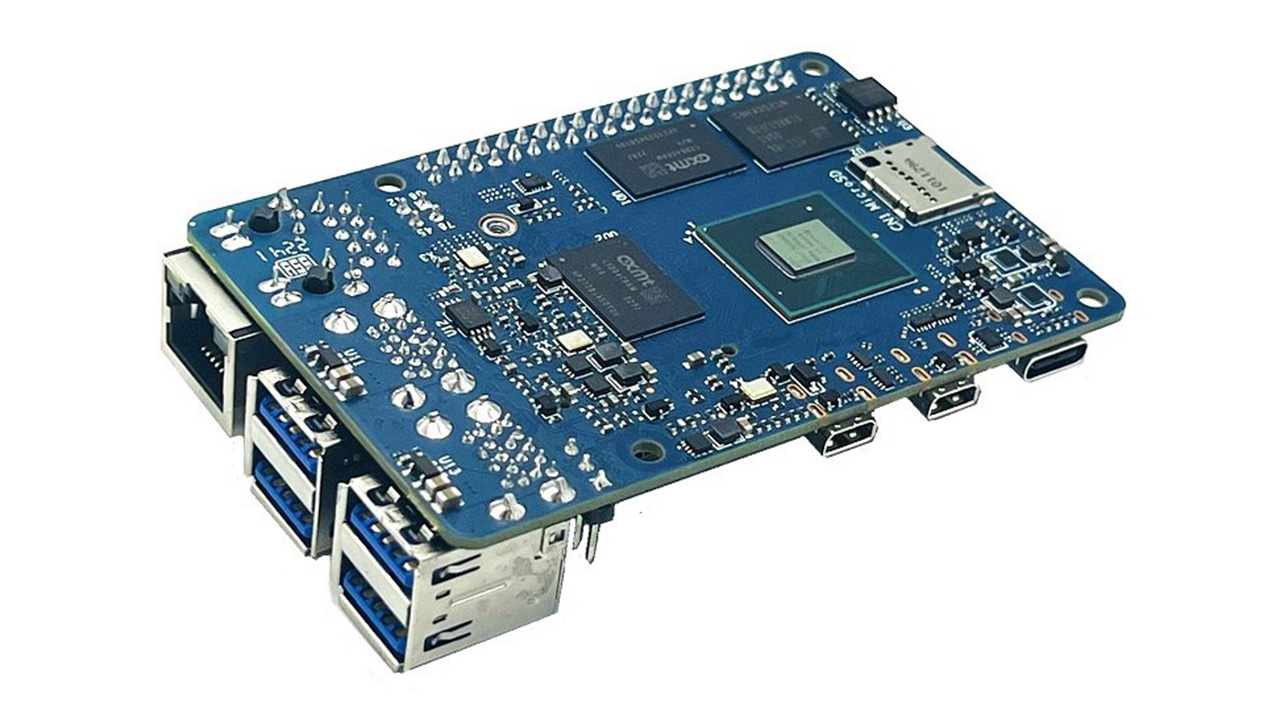Banana Pi Reveals Raspberry Pi Alternative BPI-M6 SBC
Five processor cores and an NPU on offer
Banana Pi has revealed its next-generation board, known as the BPI-M6, which follows the same design trend as the Raspberry Pi and features an NPU alongside a quad-core CPU, an M.2 socket, and an HDMI input.
While it may look like yet another small blue SBC, there's a lot going on here. The BPI-M6 has a CPU made up of four 64bit Cortex-A73 cores clocked at 2.1 GHz, with an additional Cortex M3 core, a 32bit processor often seen in microcontrollers, IoT devices, and which acted as the motion co-processor in Apple M9 devices, such as the iPhone 6S. Given the remarkable amount of work you can get out of the Raspberry Pi 4’s 1.5GHz Cortex A-72 cores, this faster and more capable CPU should be a nice upgrade, though it may require cooling.

The Imagination GE9920 is Banana Pi’s GPU of choice for this board, and is bundled with the CPU and a 6.75 TOPS NPU into a package known as the VideoSmart VS680. There's also 4GB of LPDDR4 RAM, 16GB of eMMC flash (which can be specced as high as 64GB) and a Micro SD slot, while as the back edge of the board is an M.2 socket capable of holding Key E devices, which include Wi-Fi and Bluetooth cards - useful, as there's no on-board wireless capability. Video output is as high as 4K60, and it can run a 4K screen through a micro-HDMI port as well as a 1080p screen connected via MIPI DSI.
The other micro-HDMI port is an input, pointing to potential uses in DIY set-top boxes or other video processing and IoT applications. The rest of the board will definitely look familiar to Raspberry Pi aficionados, with four USB ports (all 3.0) and a Gigabit Ethernet socket at one end, and 40 GPIO pins. There's also a header for PoE, and power is delivered through a USB-C port.
There's no information yet about software support for the new board, though previous Banana Pi SBCs such as the BPI-M5 have had Android, Ubuntu, Debian and even Raspbian images available for them. Prices and availability have also not been announced, but there is a wiki article detailing the hardware.
Get Tom's Hardware's best news and in-depth reviews, straight to your inbox.

Ian Evenden is a UK-based news writer for Tom’s Hardware US. He’ll write about anything, but stories about Raspberry Pi and DIY robots seem to find their way to him.
-
bit_user It wasn't clear to me from the description, but the SoC is VideoSmart VS680.Reply
Also, the A73 cores aren't much faster than the Pi4's A72, but the clock speed differential should help. eMMC will be a nice boost over SD-Card storage, but it has only 16 GB (soldered) which is barely enough for a slimmed-down OS install.
The marquee feature is probably the 6.75 TOPS NPU, which sounds good. The operative question is always what sorts of models it can accelerate, efficiently. This is typically limited by the amount of on-chip memory, which is usually rather little on a low-cost SoC like these.